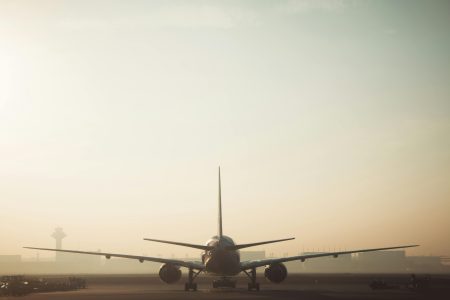Planning a road trip opens the door to adventure, offering a unique blend of freedom and discovery that other forms of travel struggle to match. As the wheels roll along the tarmac, travellers can immerse themselves in diverse landscapes, stumble upon unexpected landmarks, and create memorable experiences. With the right approach, a road trip can be customised to fit any preference, whether a scenic drive along coastal roads, a historical tour through ancient cities, or an escapade across wild, untamed paths.
To embark on such an expedition requires careful preparation to ensure that every trip element aligns with one’s aspirations and budget. An effective plan involves:
- Selecting a route that captures the essence of the journey.
- Arranging accommodations suitable for the traveller’s style.
- Choosing activities that will enrich the experience.
A road trip is more than a mere itinerary; it’s a framework for spontaneity, allowing detours into the unknown to become part of the adventure.
Drawing inspiration from varied sources is essential when charting the course for a road-bound voyage. Tools such as Google Maps and bespoke itinerary planners can aid in visualising the journey. In contrast, first-hand accounts and travel itineraries provide valuable insights. Being equipped with thorough planning and an openness to the uncertainty of travel ensures that each road trip is a personalised narrative waiting to unfold with every mile.
Planning Your Itinerary
A well-planned itinerary is the backbone of any successful road trip. Travellers can maximise their time and experience a blend of tourist attractions, national parks, and historical sites.
Selecting Your Destinations
Choosing destinations should start with reflecting on one’s interests and what one wants to gain from the trip. Whether it’s the serenity of national parks or the rich context of historical sites, travellers should list their must-visit locations. Google Maps can serve as a valuable tool for understanding the geographic location of potential destinations and their proximity to each other.
Mapping Out Routes
Once the destinations are selected, the next step involves plotting routes. Efficient route planning entails finding the optimal paths that connect your destinations while considering the quality and type of the roads. Travellers should use tools like Google Maps or dedicated route planning apps that can account for the size of their vehicle and any road restrictions. Meticulous route planning is critical to forming the ultimate road trip itinerary.
- Distance: One must account for the driving distance between stops to ensure realistic travel times.
- Road types: Preference for highways or backroads should be determined by comfort and interest.
- Traffic: They should anticipate traffic conditions, using live updates if possible, to avoid delays.
Determining Stops and Attractions
Strategising stops, and attractions break the monotony of long drives and enrich the road trip experience. They should incorporate a mix of tourist attractions, rest stops, and scenic viewpoints. Here’s a simplified approach:
- Identify must-see attractions along the route.
- Intersperse with short breaks and exciting detours.
- Consider the opening hours and best times to visit for each stop.
This section of the itinerary ensures that the final destination is rewarding and the journey there is equally enriching and structured.
Preparing Your Vehicle
Before embarking on a road trip, one must ensure their vehicle is in top condition and adequately packed. This involves careful rental selection, thorough maintenance checks, and strategic packing to enhance safety and comfort throughout the journey.
Car Hire and Rentals
When hiring a vehicle for a road trip, choosing a model that suits the terrain and group size is essential. Options range from compact cars to spacious motorhomes. Car hire companies typically offer a range of vehicles, including:
- Economy cars: Best for budget travel and small groups.
- SUVs: Ideal for rough terrain and larger groups.
- Campervans: Offer a balance between transport and accommodation.
- Motorhomes: Provide comprehensive amenities for a home-like experience on the road.
One should verify rental policies, insurance coverage, and breakdown services.
Maintenance and Safety Checks
A thorough vehicle maintenance check is necessary to minimise the risk of breakdowns. Key components to inspect include:
- Engine oil level and quality: Ensure it’s optimal and not due for a change.
- Tyre pressure and tread depth: Tyres should be inflated to the manufacturer’s recommended pressure and have sufficient tread for safe driving.
- Brakes: Brake pads and discs should be in good condition to ensure safety.
- Lights and indicators: All should be functional for proper visibility and signalling.
- Fluids: Check coolant, brake fluid, and windshield washer fluid levels.
A well-maintained vehicle will prove more reliable and safe during long drives.
Packing Essentials
Strategic packing contributes to a comfortable and safe road trip. One’s packing list should include road trip essentials while maintaining an even weight distribution in the vehicle. Essentials can be listed as follows:
| Area | Items |
|---|---|
| Emergency Kit | First aid kit, tools, flashlight, spare tyre |
| Documentation | Driving licence, rental agreement, insurance papers |
| Comfort | Pillows, blankets, reusable water bottles |
| Entertainment | Music playlists, podcasts, audiobooks |
Ensure heavier items are central and low down in the vehicle to avoid affecting handling and stability. Avoid packing items above the headrest level to maintain visibility and safety.
Budgeting and Savings
Effective financial management is crucial for a successful road trip. Crafting a meticulous budget plan and identifying multiple ways to economise can significantly reduce expenses.
Creating a Budget Plan
One begins by estimating the total cost of fuel. The traveller must calculate their road trip’s total mileage and divide it by their vehicle’s fuel efficiency (miles per gallon). This figure is then multiplied by the current cost of a litre of petrol to obtain the total estimated fuel expense. Additionally, accommodation costs should be anticipated, with considerations for the type of lodging preferred. A preliminary list of projected expenditures for food and drink is also essential for the budget.
Ways to Save Money
To save money on a road trip, travellers should consider several strategies:
- Fuel: Using apps to find the best petrol prices along the route.
- Lodging: Opting for accommodations that offer complimentary breakfast or kitchen facilities to prepare meals, which can reduce food costs.
- Meal Planning: Purchasing groceries and preparing meals can lead to substantial savings instead of dining out.
By meticulously planning and implementing cost-cutting measures, travellers can significantly reduce their road trip budget while still enjoying their journey.
Accommodation and Bookings
Securing suitable accommodation aligns with travellers’ comfort preferences and budget constraints when planning a road trip. It is crucial to book lodging in advance, whether staying in hotels or opting for outdoor camping, to ensure a stress-free journey.
Booking Accommodation
Travellers should use reliable booking platforms such as Booking.com to secure accommodations along their routes. It’s essential to:
- Check for availability: Peak seasons may limit hotel options. Early reservations are advised.
- Consider the location: Hotels with parking included are convenient. Otherwise, additional parking fees should be considered, especially in urban areas.
- Filter for facilities: Preferences such as free Wi-Fi, breakfast, or a swimming pool can be essential considerations.
Budgeting Tip: Booking directly with hotels or through loyalty programs can sometimes offer better deals than third-party websites.
Camping and Outdoors
For those seeking a closer-to-nature experience or travelling on a tighter budget:
- Campsite reservations: Book campsites in advance, particularly in popular areas. Check for minimum stay requirements.
- Free camping options: Some locations offer ‘wild camping,’ but always verify local regulations beforehand.
- Essential gear: Ensure you have all the necessary camping gear, including a tent, sleeping bags, and cooking equipment.
To maintain environmental integrity and personal safety, visitors must research and respect the camping guidelines of the areas they plan to visit.
On the Road
Once on the move, travellers should prioritise effective navigation, sustain energy with strategic snacking, and stay entertained to make the journey enjoyable.
Eating and Snacks
One must plan their food and snack intake to keep energy levels steady. A mix of healthy snacks like fruits, nuts, seeds, and some indulgent treats can maintain morale and alertness.
- Healthy options: Carrot sticks, apples, mixed nuts
- Treats: Chocolate bars, crisps, biscuits
Planning meal stops at local restaurants or bars offers a taste of the region and a respite from driving.
Navigation and Traffic
A reliable GPS ensures one stays on the correct path, providing turn-by-turn directions and updates on the current speed limits. Monitor traffic conditions to avoid congestion.
- Tools: In-built car navigation, GPS apps on smartphones
- Traffic Updates: Live traffic features on navigation apps
Entertainment and Activities
Long stretches require engagement. Curated road trip songs and podcasts can enliven the atmosphere while planning outdoor adventures at stops, which adds excitement to the journey.
- Music: Create playlists with a variety of genres
- Games: Interactive games like ‘I Spy’ keep all passengers involved.
Tools and Resources
Proper preparation for a road trip can make the difference between an unforgettable adventure and a travel nightmare. The tools and resources listed below ensure travellers have the necessary information and support at their fingertips.
Travel Applications
Google Maps: A staple for navigation, it allows users to download maps for offline use, a beneficial feature when venturing into areas with unreliable mobile coverage. Park4night: Particularly useful for those exploring Europe, the app assists in locating free or inexpensive parking spots.
- Roadtrippers App: Available for Android and iOS, this dedicated road trip planner helps users discover unique stops.
- Offline Maps: Travellers should always have a current map downloaded to maintain guidance when out of service areas.
- In-app RV Navigation: Specialised for RVs, providing turn-by-turn directions accounting for the size and propane restrictions of the vehicle.
Checklists and Guides
Preparing a comprehensive checklist proves invaluable, from packing essentials to day-by-day itineraries. Online resources and apps offer pre-made checklists tailored for various road trip scenarios, ensuring everything is noticed.
- Travel Guide Apps: Provide a curated list of attractions and accommodation options.
- Custom Itinerary Planners: Users can plan daily travel routes, stops, and activities with road trip planners like Roadtrippers Plus, which is available with a subscription.
Emergency and Insurance
Ensuring access to emergency assistance and travel insurance is crucial for any road trip:
- Travel Insurance: Should cover vehicle, health, and travel-related incidents.
- Emergency Apps can give quick access to local emergency services and roadside assistance.
Remember to verify compatibility with your travel destination’s emergency protocols and whether your insurance policy is current and comprehensive enough for your planned activities.
Documenting the Journey
Documenting a road trip can turn fleeting moments into lifelong memories and create content to share with others. Whether capturing stunning landscapes or chronicling unique experiences, adequate documentation allows one to relive and share their journeys.
Photography and Video
A traveller’s visual chronicle starts with photography and video. Selection of the right equipment is crucial; a robust digital camera or a smartphone with a high-quality camera is sufficient for most. En route, one might encounter picturesque vistas, such as those found on Route 66, which demand to be captured.
Incorporating various composition techniques can enhance these images:
- Rule of Thirds
- Balancing Elements
- Leading Lines
- Symmetry and Patterns
Keeping shots steady and diverse in terms of angles and frames for video will make for more engaging content. One can also narrate their footage, offering context to the views or sharing road trip quotes that resonate with their experience.
Sharing on Social Media
Social media platforms like Instagram and YouTube allow travellers to share their adventures with a broader audience. Posts should be consistent and tell a story to keep followers engaged throughout the trip.
Here are key points for effective sharing:
- Instagram:
- Use relevant hashtags (#Route66, #RoadTrip)
- Post high-quality images and stories
- Engage with followers by replying to comments
- YouTube:
- Create engaging video content with a clear theme
- Organise videos into playlists (e.g., ‘Route 66 Journey’)
- Regularly update subscribers on trip progress
When sharing their experiences, travellers should consider the privacy and preferences of those accompanying them. Some may prefer to avoid appearing on public platforms. Respecting such wishes maintains positive relationships and ensures a harmonious journey.
Frequently Asked Questions
In this section, you can discover answers to common queries about road trip planning, ensuring you are equipped with practical advice and tools for a seamless adventure.
What are the essential items to pack for a road trip?
One should pack a flashlight with spare batteries, an essential toolkit with duct tape, snacks and drinking water for all passengers, including pets, and car emergency warning devices like flares or reflectors. Items like an ice scraper, snow brush, and shovel are essential for winter travel.
Which applications are best for creating a road trip itinerary?
Rand McNally Trip Maker and Google Maps are reliable apps for itinerary planning. They allow for the customisation of routes and include features to discover attractions and calculate distances between destinations.
What strategies can one employ to travel on a budget?
Travelling on a budget requires researching free attractions, packing meals to reduce dining costs, and using fuel-efficient routes. Booking accommodations in advance often secures better deals.
How can someone plan an effective road trip itinerary using Google Maps?
One can determine the optimal route and identify points of interest by inputting the start and end points in Google Maps. Google Maps can also help calculate distances and travel times and allow for the addition of multiple stops.
What are the key considerations when planning a solo road trip?
Safety is paramount in a solo road trip, so one should share their itinerary with someone they trust. They should plan stops in well-lit and populated areas and have access to roadside assistance services.
What advice is there for beginners planning their first road trip?
First-time roadtrippers should start by planning shorter journeys to gain confidence. They should also familiarise themselves with their vehicle’s maintenance needs and regularly check road conditions during their trip.









